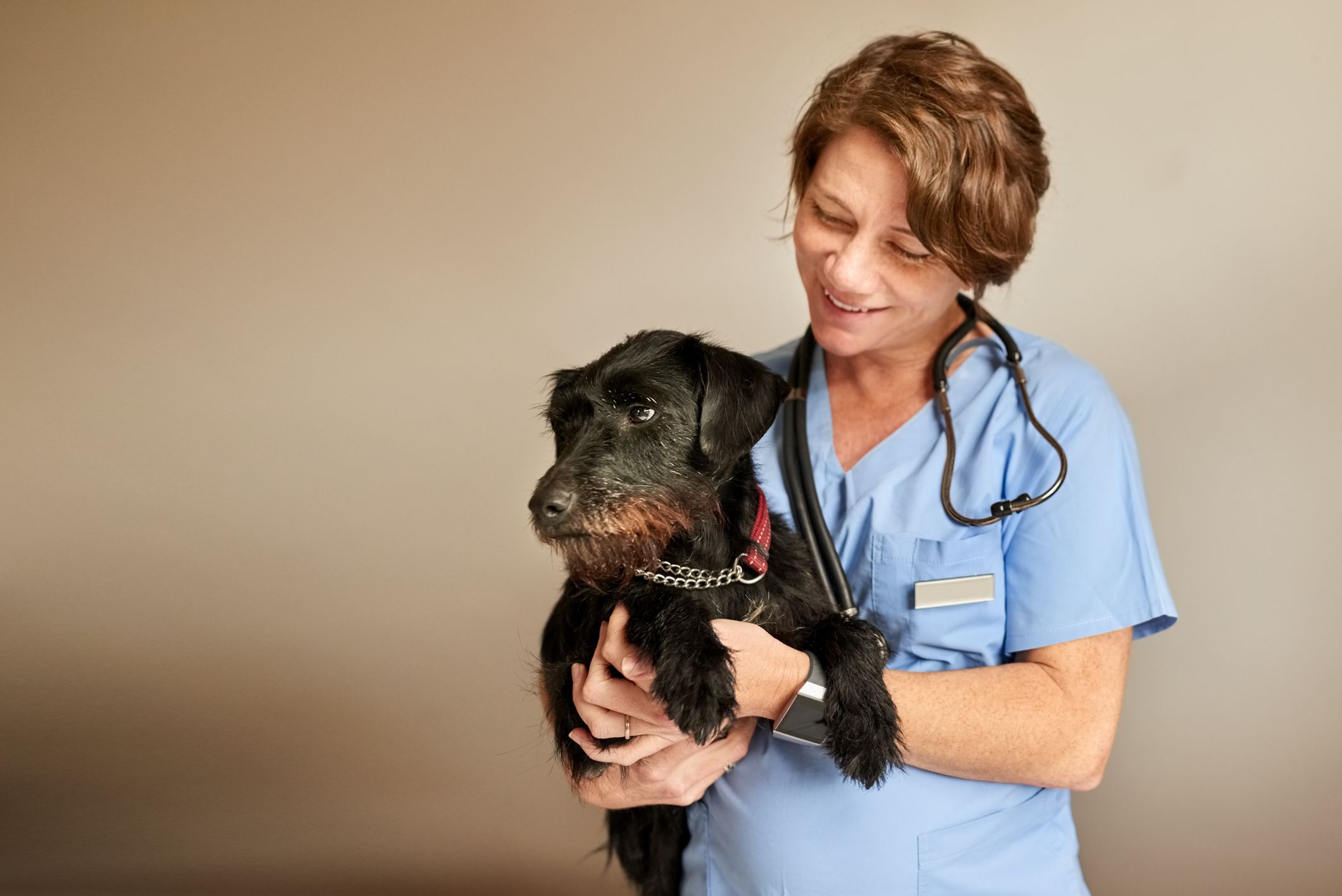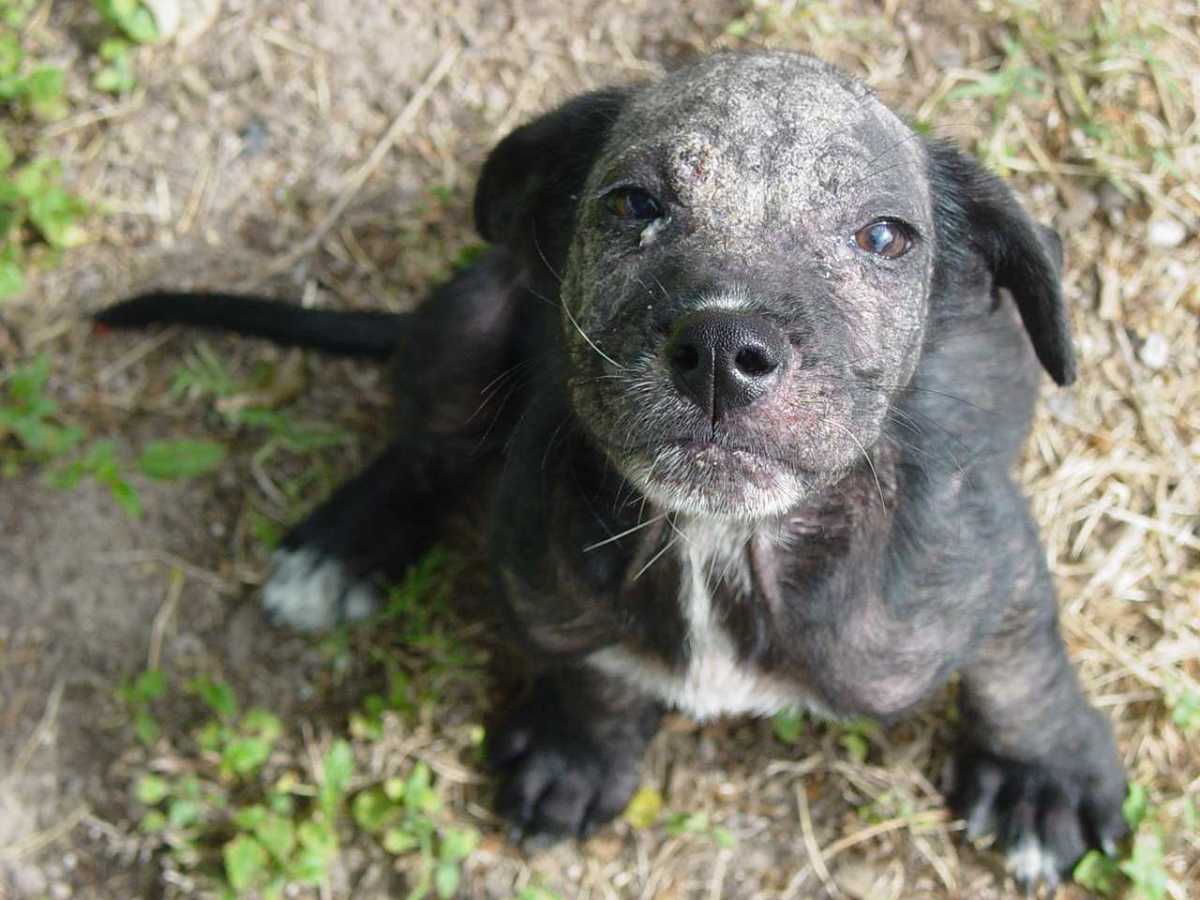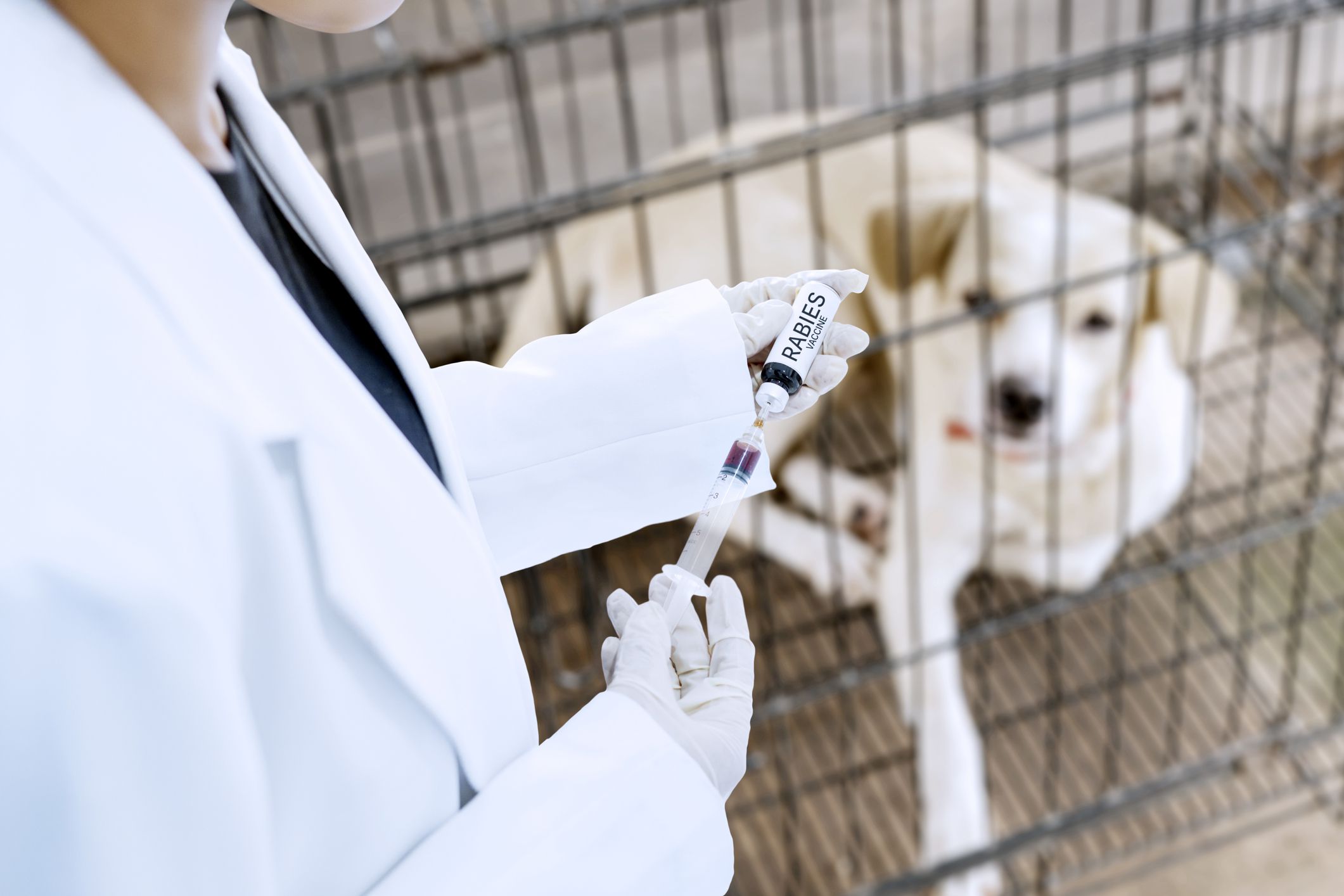Home>Health & Wellness>Common Health Issues>How Long Does A Dog Live With Cancer


Common Health Issues
How Long Does A Dog Live With Cancer
Published: February 4, 2024
Learn about common health issues in dogs, including cancer, and find out how long a dog can live with cancer. Understand the symptoms and treatment options.
(Many of the links in this article redirect to a specific reviewed product. Your purchase of these products through affiliate links helps to generate commission for Pawsomeoldies.com, at no extra cost. Learn more)
Table of Contents
Introduction
Cancer is a devastating diagnosis for anyone, including our beloved canine companions. The mere mention of cancer can evoke feelings of fear and uncertainty, leaving pet owners grappling with a myriad of questions and concerns. Understanding the impact of cancer on dogs and the potential outcomes is crucial for providing the best care and support for our furry friends.
When a dog is diagnosed with cancer, it can be an overwhelming and emotional experience for both the pet and their human family. The journey ahead is often filled with a rollercoaster of emotions, from hope to despair, as pet owners navigate the complexities of treatment options, prognosis, and the overall well-being of their cherished companion.
In this comprehensive guide, we will delve into the world of canine cancer, shedding light on the various types of cancer that can affect dogs, the factors that influence their survival, and the available treatment options. We will also explore the prognosis and life expectancy for dogs with cancer, as well as the crucial considerations surrounding their quality of life.
By gaining a deeper understanding of canine cancer and its implications, pet owners can make informed decisions and provide the best possible care for their furry friends. While the journey may be fraught with challenges, it is also marked by moments of resilience, love, and unwavering dedication to the well-being of our canine companions. Let's embark on this journey together, arming ourselves with knowledge and compassion as we navigate the complexities of canine cancer.
Read more: How Long Can A Dog Live With Skin Cancer
Understanding Canine Cancer
Canine cancer, much like its human counterpart, refers to the abnormal growth of cells within a dog's body. These cells can proliferate uncontrollably, forming masses or tumors that can invade surrounding tissues and organs. Cancer can affect dogs of all breeds, ages, and sizes, and its manifestations can vary widely, encompassing a diverse range of malignancies.
The development of cancer in dogs is a complex interplay of genetic, environmental, and lifestyle factors. While the exact causes of canine cancer remain elusive, certain risk factors have been identified, including exposure to environmental toxins, genetic predisposition, and advanced age. Additionally, factors such as diet, exposure to secondhand smoke, and certain viral infections have been implicated in the development of cancer in dogs.
One of the key challenges in understanding canine cancer lies in its diverse nature, encompassing a spectrum of malignancies that can affect different organs and systems within a dog's body. From lymphoma and osteosarcoma to mammary tumors and melanoma, the manifestations of cancer in dogs are multifaceted, each presenting unique challenges and considerations for diagnosis and treatment.
The diagnosis of cancer in dogs often begins with a comprehensive physical examination, followed by diagnostic tests such as blood work, imaging studies, and tissue biopsies. These diagnostic modalities are crucial for identifying the type and extent of cancer, laying the groundwork for formulating an appropriate treatment plan.
As pet owners grapple with the reality of canine cancer, it is essential to recognize the emotional toll it can take on both the dog and their human family. The journey of understanding and navigating canine cancer is marked by a profound sense of empathy, resilience, and unwavering dedication to the well-being of our beloved companions.
By gaining a deeper understanding of the complexities of canine cancer, pet owners can empower themselves to make informed decisions, seek the best possible care for their furry friends, and provide unwavering support throughout the challenging journey that lies ahead.
Types of Cancer in Dogs
Cancer in dogs encompasses a diverse array of malignancies, each with its unique characteristics and implications for a dog's health. Understanding the various types of cancer that can affect our canine companions is crucial for early detection, timely intervention, and informed decision-making. Here are some of the most prevalent types of cancer in dogs:
-
Lymphoma: This type of cancer originates in the lymphatic system and can manifest in various parts of the body, including the lymph nodes, spleen, and bone marrow. Lymphoma is one of the most common cancers in dogs and can lead to symptoms such as swollen lymph nodes, lethargy, and weight loss.
-
Osteosarcoma: Known as bone cancer, osteosarcoma often affects the long bones of a dog's legs, leading to lameness, swelling, and localized pain. This aggressive cancer has the potential to spread to other organs, posing significant challenges for treatment and management.
-
Mammary Tumors: Mammary tumors are frequently diagnosed in female dogs and can be benign or malignant. Early spaying can significantly reduce the risk of developing mammary tumors, emphasizing the importance of preventive measures in canine cancer care.
-
Melanoma: Just like in humans, melanoma in dogs arises from the pigment-producing cells and can occur in the mouth, skin, or toenails. While some melanomas are benign, others can be aggressive and require prompt intervention.
-
Hemangiosarcoma: This aggressive cancer originates in the blood vessels and commonly affects the spleen, liver, and heart. Hemangiosarcoma can lead to sudden and severe internal bleeding, necessitating urgent medical attention.
-
Mast Cell Tumors: Mast cell tumors can arise in the skin or internal organs and are known for their variable behavior, ranging from benign to highly malignant. These tumors can cause skin irritation, swelling, and ulceration, prompting thorough evaluation and treatment.
-
Transitional Cell Carcinoma: This type of cancer affects the urinary bladder and can lead to symptoms such as blood in the urine, increased urination, and straining during urination. Transitional cell carcinoma poses challenges for both diagnosis and management, requiring a multidisciplinary approach to care.
Understanding the diverse landscape of cancer in dogs empowers pet owners to recognize potential warning signs, seek timely veterinary evaluation, and explore appropriate treatment options. By shedding light on the various types of cancer that can affect our furry friends, we can foster a proactive and informed approach to canine cancer care, ultimately enhancing the well-being and quality of life for our beloved companions.
Factors Affecting Canine Cancer Survival
The survival outcomes for dogs diagnosed with cancer are influenced by a myriad of factors, encompassing the characteristics of the cancer itself, the overall health of the dog, and the chosen treatment approach. Understanding these factors is crucial for pet owners and veterinary professionals alike, as it lays the groundwork for formulating tailored treatment plans and prognostic assessments.
1. Cancer Type and Stage
The type and stage of cancer play a pivotal role in determining the prognosis for a dog with cancer. Certain types of cancer, such as localized skin tumors, may have a more favorable prognosis compared to aggressive, metastatic cancers like hemangiosarcoma or advanced-stage lymphoma. The extent of cancer spread, known as staging, provides critical insights into the disease's progression and guides treatment decisions.
Read more: How Long Can A Dog Live With Kidney Cancer
2. Treatment Modality
The chosen treatment approach, whether it involves surgery, chemotherapy, radiation therapy, immunotherapy, or a combination of these modalities, significantly impacts a dog's cancer survival. The efficacy of treatment, potential side effects, and the dog's response to therapy all contribute to the overall prognosis. Additionally, advancements in veterinary oncology have expanded the treatment options available, offering new hope for improved outcomes.
3. Overall Health and Age of the Dog
The general health status and age of the dog can influence their ability to tolerate cancer treatments and combat the disease. Dogs in good overall health, with robust organ function and minimal comorbidities, may have a better prognosis compared to those with pre-existing health concerns. Age can also be a determining factor, as younger dogs may exhibit greater resilience and response to treatment.
4. Nutritional Support and Care
Proper nutrition and supportive care are integral components of cancer management in dogs. Adequate nutritional support tailored to the dog's specific needs can bolster their immune function, mitigate treatment-related side effects, and enhance overall well-being. Additionally, attentive palliative care and pain management contribute to the dog's comfort and quality of life throughout their cancer journey.
5. Response to Treatment
The dog's individual response to cancer treatment, including the regression of tumors, resolution of clinical signs, and overall tolerance to therapy, serves as a critical indicator of their prognosis. Regular monitoring and assessment of treatment response enable veterinary professionals to adapt the treatment plan as needed, optimizing the chances of a favorable outcome.
Read more: How Long Will A Dog Live With Heartworm?
6. Genetic and Biological Factors
Advancements in veterinary oncology have unveiled the role of genetic and biological factors in influencing cancer survival in dogs. Understanding the molecular characteristics of specific cancers and their implications for treatment response and disease progression holds promise for personalized cancer care tailored to the unique biological makeup of each dog's cancer.
By comprehensively evaluating these factors and their interplay, veterinary professionals can offer tailored prognostic assessments and treatment recommendations, empowering pet owners to make informed decisions and provide unwavering support for their canine companions. While the journey of canine cancer may be fraught with uncertainties, a proactive and holistic approach to care can pave the way for improved survival outcomes and enhanced quality of life for dogs battling this formidable disease.
Treatment Options for Canine Cancer
The treatment landscape for canine cancer encompasses a diverse array of modalities, each tailored to the specific type of cancer, the dog's overall health, and the goals of care. Veterinary oncology has witnessed remarkable advancements, offering a multifaceted approach to cancer treatment that aims to improve survival outcomes and enhance the quality of life for dogs battling this formidable disease.
1. Surgery
Surgical intervention plays a pivotal role in the management of canine cancer, particularly for localized tumors and certain types of malignancies. The primary goal of cancer surgery in dogs is to excise the tumor and surrounding tissues to achieve complete removal, thereby minimizing the risk of recurrence. In cases where complete removal is not feasible, debulking surgery may be performed to reduce tumor burden and alleviate symptoms.
2. Chemotherapy
Chemotherapy, the use of anti-cancer drugs to target and destroy cancer cells, is a cornerstone of canine cancer treatment. While the prospect of chemotherapy may evoke concerns about potential side effects, modern veterinary oncology emphasizes tailored treatment protocols that aim to maximize efficacy while minimizing adverse reactions. Chemotherapy can be administered orally or intravenously, and its role extends beyond palliation to include curative intent in certain scenarios.
Read more: How Long Will A Tick Live On A Dog
3. Radiation Therapy
Radiation therapy, utilizing targeted radiation to destroy cancer cells and shrink tumors, is a valuable adjunct to cancer treatment in dogs. This modality is particularly beneficial for tumors that are not amenable to surgical removal or as part of a comprehensive treatment approach to achieve local tumor control. Advanced techniques such as stereotactic radiation and intensity-modulated radiation therapy (IMRT) offer precise tumor targeting while sparing healthy tissues.
4. Immunotherapy
Immunotherapy, harnessing the dog's immune system to recognize and combat cancer cells, represents a promising frontier in veterinary oncology. From cancer vaccines to immune checkpoint inhibitors, immunotherapy holds potential for enhancing the dog's natural defenses against cancer and augmenting the efficacy of traditional treatment modalities. Ongoing research in this field seeks to expand the repertoire of immunotherapeutic options for canine cancer.
5. Targeted Therapies
Advancements in molecular and genetic profiling have paved the way for targeted therapies tailored to the specific molecular characteristics of a dog's cancer. These therapies aim to disrupt the molecular pathways driving cancer growth and progression, offering a precision-oriented approach to treatment. From tyrosine kinase inhibitors to monoclonal antibodies, targeted therapies hold promise for personalized cancer care in dogs.
6. Palliative Care
In cases where curative treatment may not be feasible or in the presence of advanced-stage cancer, palliative care plays a crucial role in enhancing the dog's comfort and quality of life. Palliative interventions, including pain management, nutritional support, and attentive symptom control, aim to alleviate distressing clinical signs and optimize the dog's well-being throughout their cancer journey.
By embracing a multidisciplinary approach to cancer treatment, veterinary professionals can tailor interventions to the unique needs of each dog, striving to achieve optimal treatment outcomes while prioritizing their comfort and well-being. The evolving landscape of canine cancer treatment underscores the dedication of veterinary oncology to advancing care and fostering hope for dogs and their human families facing the challenges of cancer.
Read more: How Long Can A Dog Live With Arthritis
Prognosis and Life Expectancy for Dogs with Cancer
The prognosis and life expectancy for dogs diagnosed with cancer are influenced by a multitude of factors, encompassing the type and stage of cancer, the chosen treatment approach, the dog's overall health, and their individual response to therapy. While the journey of canine cancer is marked by uncertainties, understanding the potential outcomes and prognostic indicators is crucial for pet owners and veterinary professionals alike.
Prognostic Indicators
The type and stage of cancer serve as pivotal prognostic indicators, offering insights into the disease's behavior and potential response to treatment. Certain types of cancer, such as localized skin tumors or early-stage mammary tumors, may carry a more favorable prognosis compared to aggressive, metastatic cancers like hemangiosarcoma or advanced lymphoma. Additionally, the dog's overall health, age, and nutritional status play a significant role in shaping their prognosis, with robust health and resilience often correlating with improved outcomes.
Survival Outcomes
The survival outcomes for dogs with cancer can vary widely, ranging from months to several years, depending on the aforementioned prognostic factors and the chosen treatment approach. In cases where cancer is detected early, and prompt, aggressive treatment is initiated, dogs may achieve prolonged periods of remission and an enhanced quality of life. Conversely, advanced-stage or aggressive cancers may pose significant challenges, necessitating a comprehensive, multidisciplinary approach to care.
Tailored Treatment Plans
The evolving landscape of veterinary oncology emphasizes the formulation of tailored treatment plans that account for the unique characteristics of each dog's cancer and their individual needs. From surgical intervention and chemotherapy to radiation therapy and immunotherapy, the treatment approach is tailored to optimize the chances of a favorable outcome while prioritizing the dog's well-being and comfort. Regular monitoring and assessment enable veterinary professionals to adapt the treatment plan as needed, striving to achieve the best possible outcomes for dogs with cancer.
Quality of Life Considerations
Amidst the complexities of cancer treatment, the preservation of the dog's quality of life remains a paramount consideration. Palliative care, pain management, and attentive symptom control play a crucial role in enhancing the dog's comfort and well-being throughout their cancer journey. By fostering a holistic approach to care that encompasses both medical interventions and supportive measures, veterinary professionals aim to mitigate distressing clinical signs and optimize the dog's overall well-being.
The Human-Animal Bond
The journey of canine cancer is intertwined with the profound human-animal bond, marked by unwavering dedication, empathy, and the pursuit of the best possible care for our beloved companions. As pet owners navigate the complexities of cancer treatment, they are guided by a deep sense of compassion and a commitment to providing unwavering support for their furry friends. The journey, though challenging, is also marked by moments of resilience, hope, and the enduring bond between dogs and their human families.
By comprehensively evaluating the prognostic indicators, embracing tailored treatment approaches, and prioritizing the dog's quality of life, veterinary professionals and pet owners alike strive to navigate the complexities of canine cancer with compassion, dedication, and an unwavering commitment to the well-being of our cherished companions.
Quality of Life Considerations
Quality of life considerations lie at the heart of canine cancer care, encompassing a holistic approach that prioritizes the well-being and comfort of dogs battling this formidable disease. Amidst the complexities of cancer treatment, the preservation of the dog's quality of life remains a paramount consideration, guiding veterinary professionals and pet owners in their pursuit of comprehensive and compassionate care.
Palliative care, a cornerstone of quality of life considerations, focuses on alleviating distressing clinical signs, managing pain, and enhancing the overall comfort of dogs with cancer. Through attentive symptom control and the implementation of tailored pain management protocols, veterinary professionals strive to mitigate the adverse effects of cancer and its treatments, fostering an environment where dogs can experience relief and well-being.
Nutritional support tailored to the specific needs of dogs with cancer plays a pivotal role in enhancing their quality of life. Adequate nutrition not only supports the dog's overall health and immune function but also mitigates the potential impact of cancer-related cachexia and treatment-related side effects. By formulating customized nutritional plans and closely monitoring the dog's dietary requirements, veterinary professionals aim to optimize their nutritional status and well-being throughout their cancer journey.
Emotional support, both for the dog and their human family, is integral to quality of life considerations in canine cancer care. The emotional toll of cancer, marked by feelings of uncertainty, fear, and distress, underscores the need for compassionate support and guidance. Pet owners are empowered to provide a nurturing and reassuring environment for their furry companions, fostering a sense of security and comfort amidst the challenges they face.
Regular monitoring and assessment of the dog's well-being, including their physical, emotional, and behavioral status, enable veterinary professionals to adapt the treatment plan as needed, ensuring that the dog's quality of life remains a central focus. By fostering open communication and collaboration between pet owners and veterinary teams, a comprehensive and empathetic approach to care is cultivated, enriching the dog's cancer journey with compassion and unwavering support.
The journey of canine cancer, though marked by challenges, is also characterized by moments of resilience, hope, and the enduring bond between dogs and their human families. By embracing a holistic approach to care that encompasses both medical interventions and supportive measures, veterinary professionals and pet owners alike strive to navigate the complexities of canine cancer with compassion, dedication, and an unwavering commitment to the well-being of our cherished companions.
Conclusion
The journey of canine cancer is a multifaceted odyssey marked by resilience, empathy, and unwavering dedication to the well-being of our beloved companions. As we navigate the complexities of canine cancer, we are guided by a profound understanding of the disease's impact, the diverse treatment modalities available, and the crucial considerations surrounding prognosis and quality of life.
The evolving landscape of veterinary oncology has ushered in remarkable advancements, offering a multifaceted approach to cancer treatment that aims to improve survival outcomes and enhance the quality of life for dogs battling this formidable disease. From surgical intervention and chemotherapy to radiation therapy, immunotherapy, and targeted therapies, the treatment options available underscore the dedication of veterinary professionals to advancing care and fostering hope for dogs and their human families facing the challenges of cancer.
Prognostic assessments, tailored treatment plans, and the preservation of the dog's quality of life remain central tenets of canine cancer care. By comprehensively evaluating prognostic indicators, embracing tailored treatment approaches, and prioritizing the dog's well-being, veterinary professionals and pet owners alike strive to navigate the complexities of canine cancer with compassion, dedication, and an unwavering commitment to the best possible care for our cherished companions.
The journey, though challenging, is also marked by moments of resilience, hope, and the enduring bond between dogs and their human families. As pet owners, veterinary professionals, and advocates for our furry friends, we stand united in our pursuit of compassionate, comprehensive, and unwavering support for dogs battling cancer. Through empathy, knowledge, and a shared commitment to the well-being of our cherished companions, we embark on this journey with hope, resilience, and an enduring dedication to the welfare of our beloved canine companions.










